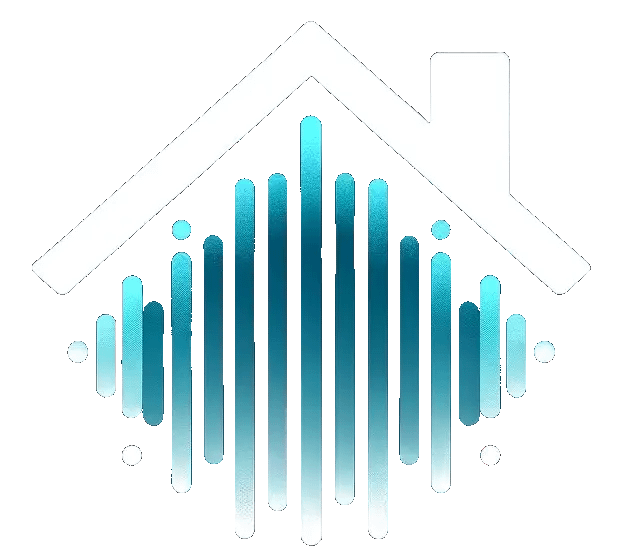In today’s fast-paced world, automation has become integral in modern life. Smart devices are crucial in this transformation, allowing homeowners to streamline and enhance their daily routines. Increased convenience, efficiency, and energy savings are just a few advantages of automating daily tasks.
Smart home devices range from simple voice-activated assistants to complex home automation systems that control lighting, security, and appliances. The benefits of integrating these technologies into your daily life are immense, making home management more effortless and enjoyable.
The Evolution of Smart Devices in Home Automation
The journey of smart devices began several decades ago, with early innovations focusing on individual gadgets that offered basic automation. Over time, technological advancements have led to the development of sophisticated smart home systems that provide seamless integration and control over various household functions.
Key milestones in smart device technology include the introduction of the first smart thermostats, voice-activated assistants, and comprehensive smart home hubs. These innovations have paved the way for today’s interconnected and highly functional smart homes.
Types of Smart Devices for Automating Daily Tasks
Smart Hubs and Controllers
- Smart speakers: Devices like Amazon Echo and Google Home enable voice control of various smart devices and provide a centralized hub for managing home automation.
- Smart displays: Google Nest Hub and similar devices offer visual interfaces for controlling smart devices, displaying information, and managing routines.
- Smart home hubs: Platforms like Samsung SmartThings provide a unified interface for connecting and controlling multiple smart devices within a single ecosystem.
Smart Appliances
- Smart refrigerators: These appliances can monitor food inventory, suggest recipes, and even order groceries.
- Smart ovens and microwaves: Offering precise cooking controls, these devices can be programmed remotely and integrated with meal-planning apps.
- Smart washing machines: These appliances allow users to start, stop, and monitor laundry cycles from their smartphones.
Smart Lighting and Climate Control
- Smart bulbs and switches: These lighting solutions can be scheduled, dimmed, and controlled via voice commands or apps.
- Smart thermostats: Devices like Google Nest and Ecobee offer intelligent climate control, learning user preferences, and optimizing energy usage.
Smart Security Systems
- Smart locks and doorbells: Enhance home security with remote access, video monitoring, and automated locking features.
- Security cameras: Provide real-time surveillance and alerts, integrating seamlessly with other smart security devices.
How to Setup and Use Smart Devices for Home Automation
Choosing the Right Devices
When selecting smart devices, it’s essential to consider compatibility with existing systems and ecosystems. Ensure that the devices you choose can communicate with each other and integrate into a cohesive smart home setup.
Setting Up Smart Devices
- Connect devices to your home Wi-Fi network.
- Use the accompanying apps for initial configuration and customization.
Integrating Devices
- Utilize smart hubs to unify control of multiple devices.
- Create routines and scenes that automate multiple tasks simultaneously.
Popular Use Cases of Smart Devices
Voice-Assisted Control
Voice assistants like Alexa, Google Assistant, and Siri enable hands-free control of smart devices. Users can issue commands, set routines, and manage their homes effortlessly.
Scheduled Automation
Smart devices allow users to set up daily routines that automate tasks based on time or events. For instance, you can program your lights to turn on at sunset or your thermostat to adjust the temperature when you leave for work.
Remote Monitoring and Control
One of the significant advantages of smart devices is the ability to monitor and control them remotely. Whether checking your security cameras or adjusting your thermostat, you can manage your home from anywhere using your phone.
Advanced Automation with Smart Devices
IFTTT (If This Then That)
IFTTT is a powerful tool for creating custom automation recipes that link different devices and services. For example, you can set up an automation that turns on your smart lights when your smart doorbell detects motion.
Integration with Other Services
Smart home devices can be integrated with popular services like Amazon Alexa and Google Assistant, allowing for more streamlined and versatile automation.
Machine Learning in Smart Homes
AI-driven automation is becoming increasingly prevalent in smart homes. Devices equipped with machine learning can predict user preferences and adjust settings automatically, creating a more intuitive and responsive home environment.
Benefits and Challenges of Automating Daily Tasks with Smart Devices
Benefits
- Convenience and efficiency: Automating routine tasks frees up time and simplifies daily life.
- Energy savings: Smart devices optimize energy usage, reducing utility bills and environmental impact.
- Increased security: Advanced security features enhance home safety and provide peace of mind.
Challenges
- Initial cost and setup complexity: The upfront investment and technical knowledge required can be a barrier for some users.
- Privacy and security concerns: As smart devices collect and transmit data, there are potential risks related to data privacy and cybersecurity.
- Learning curve for new users: There may be an initial learning curve for new users, but our guides will help you get started and continue to improve your smart home.
Future Trends in Smart Home Automation
The future of smart home automation is bright, with continuous technology advancements. Innovations in AI and machine learning will further enhance the capabilities of smart devices, making homes even more intelligent and responsive. Emerging technologies, such as advanced voice recognition and augmented reality, will also play a significant role in shaping the smart homes of tomorrow.
Conclusion
Automating daily tasks with smart devices can transform your home into a more efficient, secure, and enjoyable living space. As technology continues to evolve, the possibilities for home automation will only expand, offering even greater convenience and innovation for homeowners.
For further reading, check out our recommended links: Smart Home Devices: A Comprehensive Guide, Smart Home Setup in 9 Simple Steps, and Smart Home Guide: Security Devices.
FAQs: Automating Daily Tasks with Smart Devices
What are smart devices for home automation?
Smart devices for home automation are electronic gadgets that connect to the internet and can be controlled remotely or automatically to perform various tasks, making daily routines more efficient and convenient.
How can I automate daily tasks with smart devices?
Use smart devices to automate tasks such as controlling lights, adjusting thermostats, managing security systems, and operating appliances. These devices can be programmed to follow schedules or respond to specific triggers.
Are smart devices secure?
While smart devices offer numerous benefits, it’s essential to consider their security. Ensure your devices are from reputable manufacturers, keep firmware updated, and use strong, unique passwords to minimize risks.
What is the best smart home system?
The best smart home system depends on your specific needs and preferences. Popular options include Amazon Alexa, Google Home, and Apple HomeKit, each offering unique features and compatibility with various devices.



